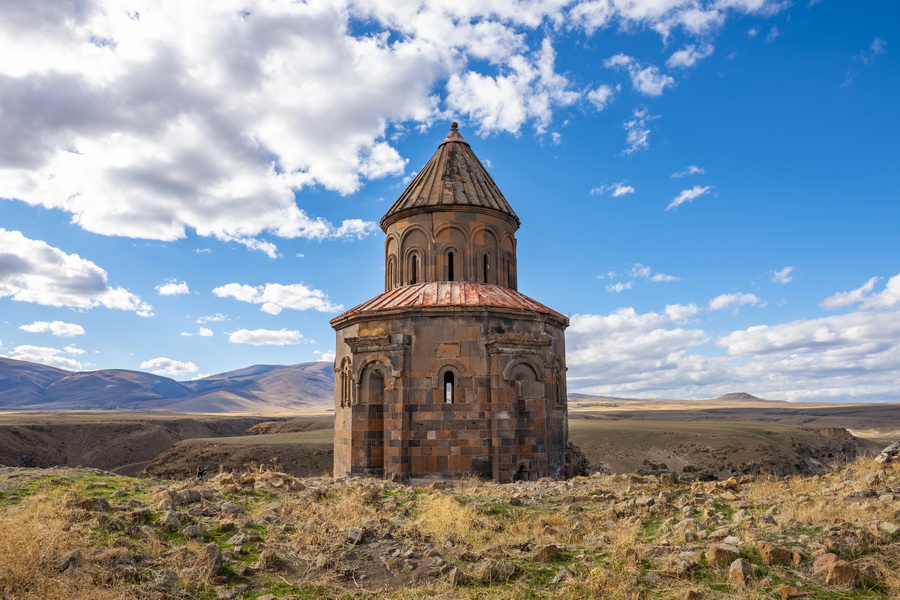A famous stop for Noah’s Ark on Mount Ararat (Ağrı Dağı) and a crossing place since Biblical times, the Eastern Anatolia Region (Doğu Anadolu Bölgesi) is Turkey’s (Türkiye) wild frontier and birthplace of multiple civilisations. East Anatolia has been an important land bridge for thousands of years, connecting the Persian Plateau to the Anatolian heartland and Mesopotamia to the Caucasus.
Characterised by monumental mountain ranges and glacial rivers, this rocky landscape served as the site of the passage of empires, merchants, missionaries and exiles, from Silk Road caravans to military campaigns. Even today, with borders drawn and redrawn, Eastern Anatolia remains a liminal zone where East meets West, tradition meets resilience, and past meets future.
Urban centres such as Erzurum, Van, Kars and Bitlis function as gateways to this deep-rooted history. The architectural remnants here are witnesses to the Seljuks, Ottomans and civilisations predating both. Lake Van features snow-capped volcanic peaks, while the Urartian fortress at Tuşpa remains anchored on its shore. The ruins of Ani, once a metropolis renowned for its churches, now guard a windswept plateau near the Armenian border. Mount Ararat, dominating the horizon at Ağrı, carries both geological significance and profound cultural resonance.
Armenian cathedrals, Kurdish communities, Assyrian remnants, and Ottoman-Islamic complexes reveal the region's multifaceted identity, depicting it as a doorway between worlds.
Eastern Anatolia Region Tours
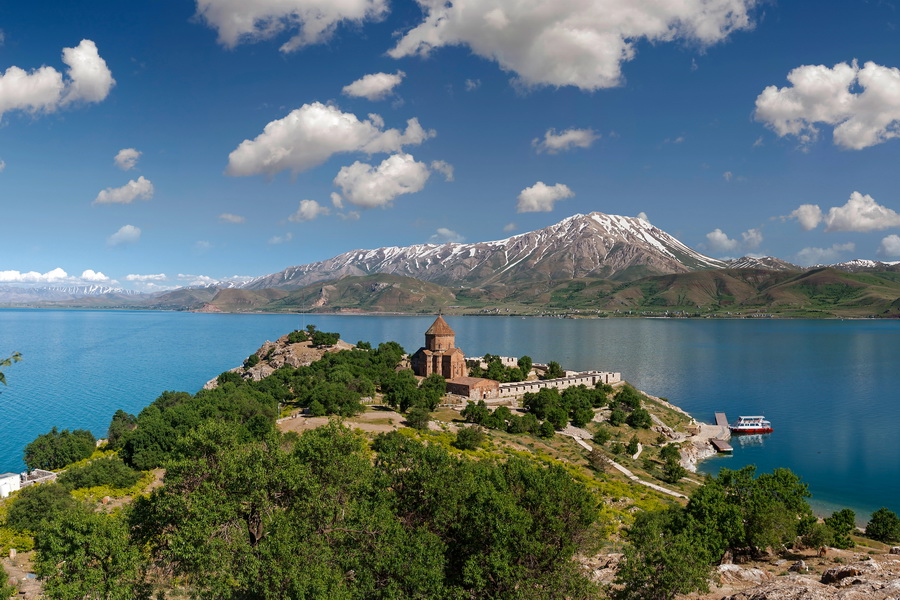
Urartian citadels, Armenian monasteries, Ottoman palaces, and Seljuk madrasahs shape historical tours in the Eastern Anatolia region. From Kars to Hakkari, journeys here present a different chapter of history, surfacing into volcanic plateaus, fertile valleys, weatherworn plains and the snow-covered slopes of its renowned ski resorts.
Guided tours often begin in Kars with the UNESCO World Heritage Site of Ani and move southward to Van, where ferries take visitors to Akdamar Island (Akdamar Adası) for a recognition of mediaeval Armenian stonework. In Ağrı, the rose-tinted facade of Ishak Pasha Palace (İshak Paşa Sarayı) faces the slope of Mount Ararat, while Van Fortress (Van Kalesi) watches over the city’s Urartian heart. Bitlis and Ahlat depict a rare visual record of Seljuk funerary art carved in basalt.
Additionally, you’ll find hiking trails in Hakkari Cilo-Sat Mountains National Park (Hakkâri Cilo ve Sat Dağları Millî Parkı) and among the glacial lakes of the Munzur Valley (Munzur Vadisi Milli Parkı). Seasonal tours explore spring tulip fields in Muş and summer plateaus in Erzincan and Hakkari. For cultural depth, Van’s breakfast tables, Erzurum’s cağ kebab, and Malatya’s apricot orchards are best experienced specifically in the region.
The Eastern Express train (Doğu Ekspresi), especially in winter, showcases the region's stark beauty through carriage windows. These slow immersions into the textures of Eastern Anatolia: its highland climate and remote villages.
Tracing the Silk Road or following the rivers that become the Euphrates, a tour in Eastern Anatolia is about entering a landscape where history, nature and culture have never been fully separated.
Best Time to Visit Eastern Anatolia Region
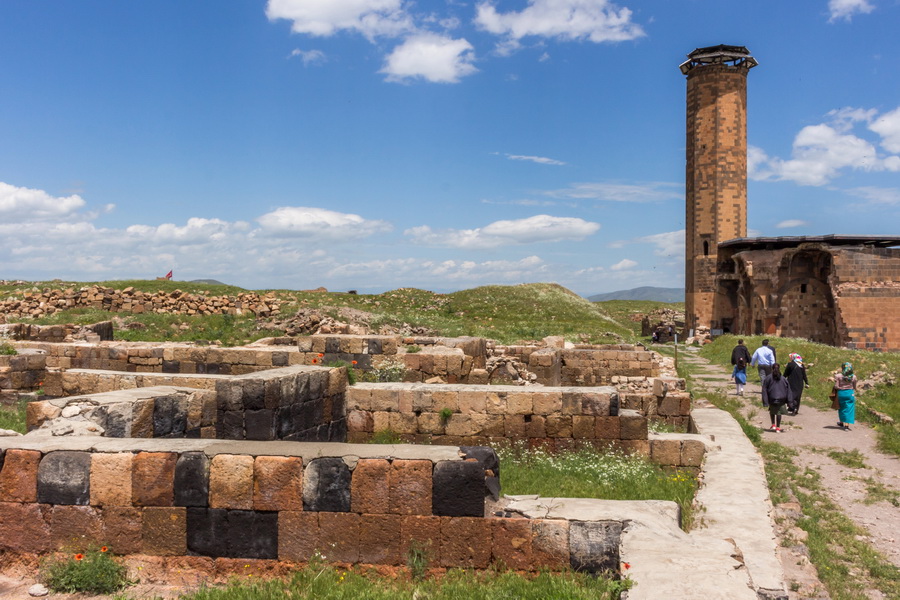
With its high-altitude plains, jagged mountains and cities steeped in snow, the best time to visit Eastern Anatolia is between May and October, though the region’s elevation and remoteness mean a year-round vacation. Spring and autumn deliver the most accepting climate for most travellers, while summer and winter provide distinct rewards for those who know what they’re after.
Spring comes slowly, snow melting from the hills and high roads. By April, valleys blossom green and wildflowers grow as the ground warms up. Kars, Erzincan and Ardahan open up, and Ani’s ruins look their best under a blue sky. Roads are passable but not yet crowded with domestic tourists. This is the season to walk the ruins without perspiring and watch rivers break free from ice.
Summer is hot and sharp. Temperatures rise, but the altitude makes it cool. From June to early September, roads are open to the farthest corners. Hikers and cyclists come to cross plateaus and circle around Mount Ararat.
Autumn falls fast here. By late September, the colours sharpen and trees drop their leaves. The crowds disappear. Farmers harvest the last from their high fields, and the light is clear. The weather is cool but stable, and with the summer dust settled, it marks the best time to visit Eastern Anatolia’s historical sites and lesser-known trails.
In winter, Lake Çıldır (Çıldır Gölü) freezes over, and horse sleighs glide by and fishermen pull out yellow carp. Erzurum drops to –30°C (-22°F); skiers eat cağ kebabı and kadayıf dolması afterwards. Lake Van (Van Gölü) remains unfrozen, in contrast to the white peaks. Villages outside Hakkâri and Muş remain in snow tunnels.
Uncover the Charms of the 14 Provinces of the Eastern Anatolia Region
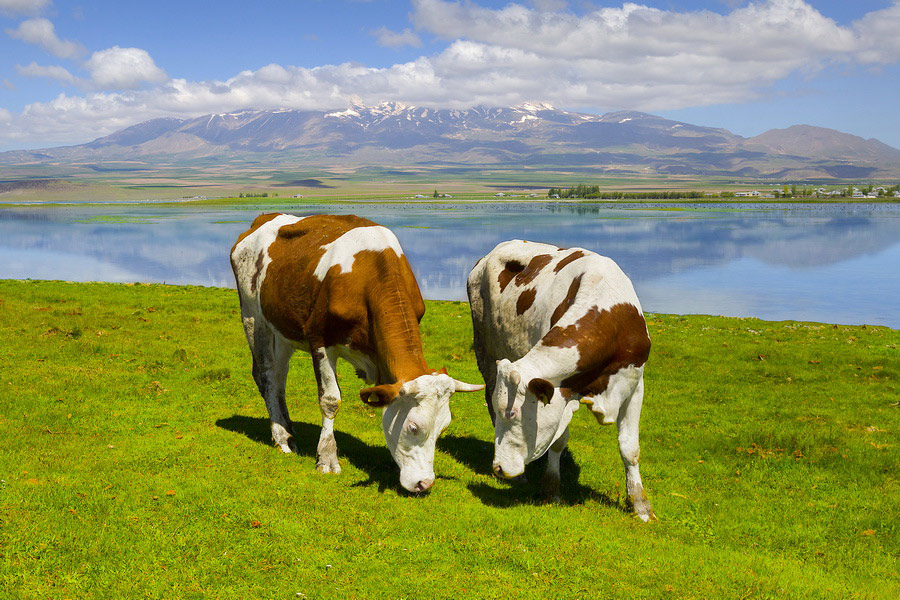
With its 14 provinces, Eastern Anatolia is a mosaic made of landscapes, cultures and histories. In Ağrı, Armenian past is at every corner with Mount Ararat in the background. Bingöl is celebrated for its beautiful lakes, thermal springs and wild mountain scenery. In Bitlis, the Kurdish heart of the region, the mediaeval bridges cover deep gorges, nestled against Lake Van. In Elazığ, a true lakeside city formerly known as Kharberd, you’ll even be able to see copper crafts scattered far and wide across the city. Malatya is known for apricots, where the pristine plains and remains of Hittite kings are one of many other great attractions.
Further southeast, Hakkâri’s jagged peaks and rugged hiking routes deliver raw, untamed beauty. You can stay on level ground in Iğdır, where the Aras River creates an oasis-type environment around the region; cotton is grown in this valley, among the fingerprints of Ararat.
Kars, a fortress, city with Russian and Armenian architecture, extends to the Armenian border. Muş holds the weight of history, remembering the Battle of Manzikert, whose outcome radically shifted the balance of power in the region. In Tunceli, the rebel capital and Alevi stronghold, you can appreciate the majestic Munzur valleys, which serve as a hidden refuge from the rivers that rise from them. In the heart of the region, Van balances a Kurdish power to it and the remnants of Vaspurakan.
To the north, Ardahan features wide green hills and the Georgian border, while Erzincan holds onto its Silk Road past. A mountainous fortress, Erzurum has exceptional Seljuk madrasahs and a passion for winter sports and draws both religious pilgrims and adventurers.
Explore the History of the Eastern Anatolia Region
The mountains of Eastern Anatolia constitutively harbour peoples and have been the crossing lines of empires, and have facilitated trade from the highland plateaus down into the deeper folds of Mesopotamia. This is the land where the Hittites (Hititler) ruled over copper and weapons routes. Lake Van, surrounded by stone fortresses and ancient cities, was the backbone of Urartu – Ararat in the Bible.
First, an Urartian spot, Erzurum became a Byzantine garrison and eventually a Seljuk fort. To the southwest, Malatya and the ancient hill fort of Harput at Elazığ started with the Hittites but ultimately became an Ottoman castle. Further east, Muş and Bingöl still carry the marks and stories of Kurdish migrations and mediaeval Turkmen beyliks. Hakkâri and Şırnak in the depths of these ranges remained semi-autonomous into the Ottoman period, governed by tribal leaders unwilling to obey the Empire.
Tunceli once served as a sanctuary for Armenian and Zaza communities, with its historical reputation as an independent entity (kâh-görek) established long before the cities of Kars and Iğdır formed in the shadow of the Caucasus. However, Kars and Iğdır lost their historical connections to Russian, Ottoman and Armenian populations along the border. In the 19th century, these communities repeatedly traversed the contested boundary while living in a region shaped by imperial borders.
Most of the region’s architectural heritage, such as mosques, madrasahs, and caravanserais, was built by Islamic dynasties like the Seljuks, Shah-Armens (Şah-i Ermen), and Aq Qoyunlu (Akkoyunlular). Over time, the Ottomans and Safavids (Safevî) fought for control of these mountainous lands. Even after the Ottoman Empire fell in 1923, the region continued to change.
Plan your Dream Holidays in the Eastern Anatolia Region
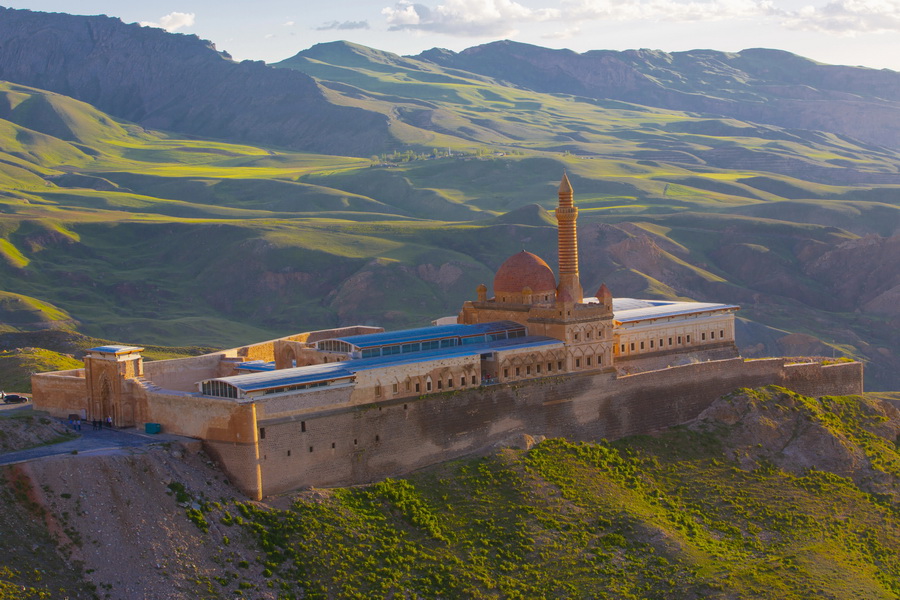
This region on the wild frontier holds Turkey's historical layers, where semi-nomadic shepherds still follow ancient migration routes, moving livestock between summer pastures and winter valleys, and unique wildlife blossoms here, including the Van cats renowned for their heterochromatic eyes and migratory birds crossing Lake Van.
Historical Sites
The archaeological site of Ani, a former mediaeval Armenian capital, features well-preserved churches and city walls dating to the 10th-13th centuries. Ishak Pasha Palace near Doğubayazıt represents an 18th-century architectural combination of Ottoman, Persian and Armenian styles. The Van Fortress, constructed by the Urartian Kingdom in the 9th century BCE, overlooks Lake Van. Mount Ararat (5,137 m), Turkey's highest peak, holds religious significance in multiple traditions. Other notable sites include Çavuştepe's Urartian ruins and Harput's Seljuk-era structures.
Traditional Mountain Life
Eastern Anatolia preserves unique pastoral traditions such as semi-nomadic communities who still practice seasonal migration, moving herds between summer highland pastures (yaylas) and winter valleys. The region is known for distinctive stone-built mountain villages like Uzundere and Olur, where traditional architecture adapts to extreme winters. Local crafts include handwoven kilims using natural dyes and silver jewellery made by Kurdish metalsmiths. Milk production remains important, particularly for herbed cheeses that are aged in mountain caves.
Cultural Heritage
The culture of Eastern Anatolia is a history of being multi-ethnic. This is evident in Kars, where the Russian imperial architectural remains from the time the Tsars ruled (1878-1918). Erzurum has many Seljuk monuments, including the 13th-century Çifte Minareli Medrese (twin minaret madrasah). The region is also known for certain food traditions, specifically Van's breakfast spreads, which feature more than 30 individual items.
Notable Features
Several unique geological and historical features exist in the region, such as the Doğubayazıt meteorite crater (Meteor Çukuru), measuring 60 metres in depth and 55 metres in diameter. Mount Ararat's climbing season is June-September, requiring permits from Turkish authorities. The abandoned Armenian village of Çengilli preserves stone architecture from the early 20th century. Fossil beds near Iğdır contain remnants from the Miocene epoch.
Marvel at Natural Wonders and Delight in Outdoor Activities
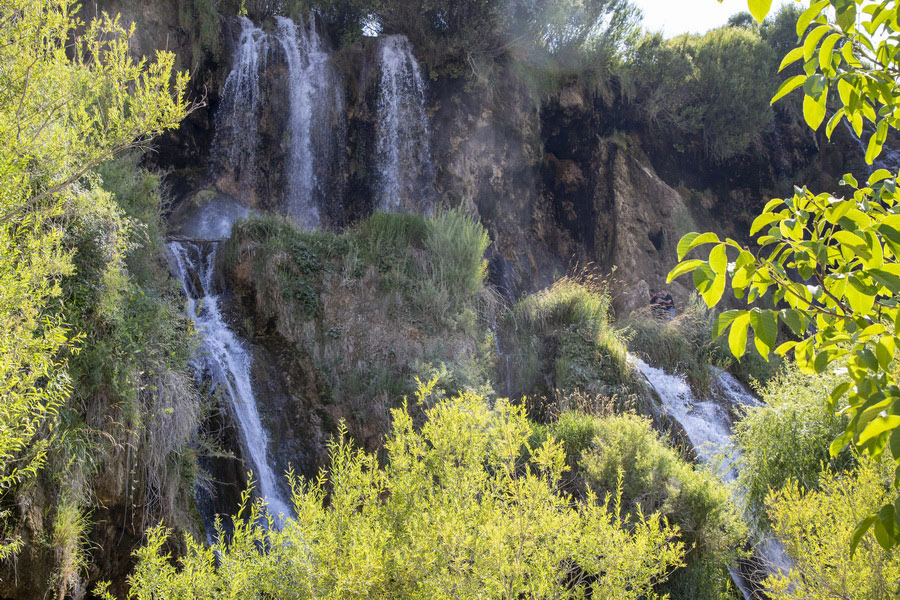
In the Eastern Anatolia Region, the high plateau collides with the shoulders of Palandöken. Nature washes through Erzurum by way of the waterfalls of Tortum to the Çifte Minareli Madrasah, then onwards through the ruins of the Oshki Monastery (Öşvank or Oşki Manastırı). While winter freezes the air into crystals, summer turns the plains into a cool retreat.
To the further east is Kars, the gate to Anatolia, a 30-minute ride to the ruins of Ani, with the traces of 23 civilisations. Ardahan sits even higher, with the cold lake of Lake Çıldır just below and the jagged fortress of Şeytan Kalesi over Karaçay Canyon (Karaçay Kanyonu).
Iğdır is a green and fertile region, often referred to as the Çukurova of the East. It borders Armenia and Iran. The Aras Canyon is a popular destination for trekkers, and Mount Tekelti (Tekelti dağı) attracts climbers with its challenging ridges.
Erzincan has historical importance as a stop along the Silk Road. The region features valleys in Kemaliye, Kemah, and İliç shaped by rivers. The Girlevik Waterfall (Girlevik Şelalesi) is a notable natural site. Altıntepe Fortress, a historical Urartian site, overlooks the area.
In Van, the Muradiye Waterfalls (Muradiye Şelalesi) are a major natural attraction, known for their flow over basalt rock into cold pools. Mount Cilo (Cilo Dağı), the highest mountain in the region, contains glaciers and is popular with experienced climbers.
Green Escapes: Ecoregions and Sustainable Destinations
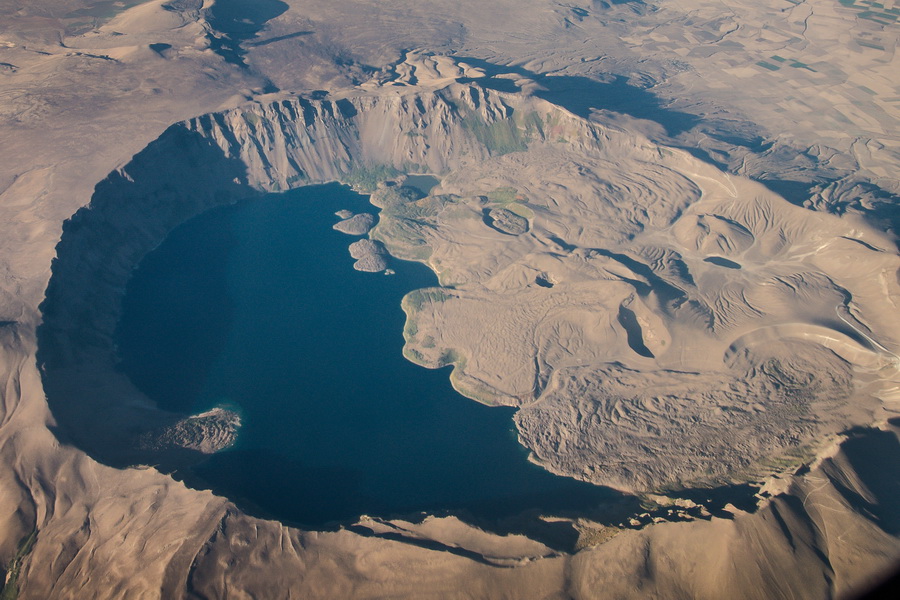
Diverse ecoregions and sustainable tourism destinations of this corner region highlight its ecological significance and commitment to environmentally responsible travel.
In Ağrı Province, Lake Balık (Balık Gölü) is a lava-dammed lake located at 2,250 metres in the Aras Mountains. It freezes in winter and becomes a habitat for velvet ducks and trout in summer. Doğubeyazıt is nearby, located near Mount Ararat, which is Turkey’s highest mountain at 5,137 metres.
To the west, Erzurum features high plateaus and is known for winter sports at Palandöken Ski Centre. The region additionally grants hiking across dry, rocky steppes where the tragacanth herb grows.
In Bitlis, villages are located around Lake Nemrut (Nemrut Gölü) and the dormant Nemrut Volcano (Nemrut Stratovolkanı). In Hakkâri, the Buzul Mountains are steep and contain glaciers, alpine plants and remote hiking trails.
Muş, with Lake Haçlı (Haçlı Gölü) surrounded by meadows, harmonises highland fishing culture with pastoral life, while Bingöl’s volcanic tundras, Akdoğan Mountains (Akdoğan Dağları), and wild rose shrublands feel untouched. Tunceli’s Munzur Valley, rich with endemic flora, features canyons and river sports in the Munzur and Pülümür rivers.
Elazığ, at the western side of the region, is known for Lake Hazar (Hazar Gölü), which is the source of the Tigris River (Dicle). Erzincan is situated along the Karasu River, surrounded by plains, springs and the highlands of the Anti-Taurus Mountains (Aladağlar).
Ardahan and Kars are near Lake Çıldır, where people still take sleigh rides on the frozen lake during the winter. The Iğdır Plain, located at a lower altitude, is fertile and stands out in the otherwise mountainous region.
Anatolia on the Runway: Eastern Express
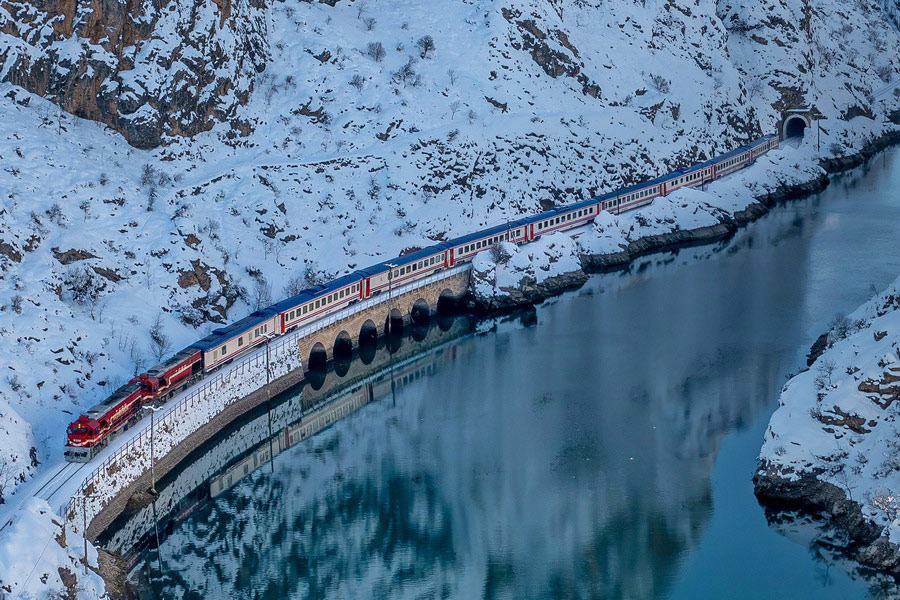
The Eastern Express is a train route that runs daily from Ankara to Kars, passing through the Central Anatolia Region and ending at Eastern Anatolia. The line was first planned in the 1920s and built in stages through the mid-20th century. It begins in Ankara and passes through cities shaped by different history and geography. Erzurum follows a former military stronghold with Ottoman-era architecture and buildings made of black basalt. The final leg leads through snowy villages to Kars.
The train travels slowly, averaging 80 kilometres per hour. It has standard couchettes and Pullman seats, and travellers often choose it for the scenery rather than speed. The best time to travel aboard Eastern Express is winter, especially when Lake Çıldır freezes and horse-drawn sleighs move across the ice. Spring reveals another side of the region, as greenery returns to the plains around Kars. Riding the Eastern Express is a way to cross through a part of Turkey that is often overlooked.
Reconnect with Nature by Experiencing Farm Stays and Agrotourism
Agrotourism in Eastern Anatolia means living closely with people whose daily lives depend on the land, created by tough climates and traditions rooted in necessity. In Boğatepe, around 20 kilometres from Kars, cheese is still made using old techniques brought by the Molokan community, Russian religious exiles who arrived in the 19th century. The well-known Kars gravyer cheese is aged in natural stone caves that stay cool and moist without any machines. Visitors can stay in village homes to participate in various activities, from early-morning cow milking to curd-making and turning heavy cheese wheels.
In Van, dishes like otlu peynir (a salty cheese filled with herbs), murtuğa (a mix of butter, eggs, and flour), and fresh honey from the Gevaş highlands are usually made by the same families who serve them. Most households still milk their own animals and use traditional underground storage to prepare for the winter.
In Muş, especially in villages like Kızılağaç, beekeeping follows seasonal movement. Every summer, hives are taken up into the mountains where bees collect nectar from wild thyme, linden trees and rare flowers. The honey is unprocessed, often sold in natural honeycomb form.
Shepherds live in tents or basic stone shelters called “alaçık” during May-September, using small wood stoves or open fires. Collecting dung for fuel, helping with births, boiling milk and watching over the herd is rare but still a possibility for travellers to participate in.
There are a few places to stay, mostly village co-ops in places like Boğatepe, Yayladere in Bingöl, or Bahçesaray in Van. These aren’t hotels. Visitors will likely sleep in shared rooms, help cook and learn directly from the people living there.
Wild herb gathering is another part of life, especially in Bingöl and Tunceli. Women collect plants like ışkın (wild rhubarb), dağ nanesi (mountain mint), and kenger for drying, storing or using in food and medicine. Many of these herbs grow only in certain spots and only for a short time each year.
Embrace Sustainable Shopping: Enjoy Eco-Friendly Finds

Wandering through Eastern Anatolia’s markets and bazaars is to walk through centuries of craftsmanship and local trade. In Van, the Russian Bazaar remains a central spot for everyday needs and regional goods, with stalls full of textiles, copperware, pickled herbs and different types of cheese, including the city’s well-known herb cheese made with plants gathered from mountain slopes. The Van Cheese Market functions as a living part of the area’s rural economy, connecting village production with city demand.
In Erzurum, marketplaces are practical spaces where tailors, butchers, spice sellers, and metalworkers still operate, selling Eastern Anatolia regional goods. Local groceries like Kars Bakkaliyesi provide dried meat, nuts and other products often wrapped by hand and sold by weight.
The area around the old lower castle in Bitlis still serves as a centre for buying textiles, copper items, and regional honey. The recently restored Bazaar Square Gate leads into streets where traditional shopping of domestic productions continues.
Shops along the main roads in Kars sell Gravyer and aged Kaşar cheese made with milk from animals grazing on the plains. These cheeses support small-scale producers who use long-standing methods tied to the land.
Even in smaller cities like Bingöl, marketplaces such as Aşağı Çarşı, the Bazaar, remain connected to their surroundings. Located near the İsfahan Bey Mosque, this bazaar is modest but essential, with its seasonal produce and handcrafted goods.
A Taste of Tradition: Savour Regional Authentic Food of Eastern Anatolia
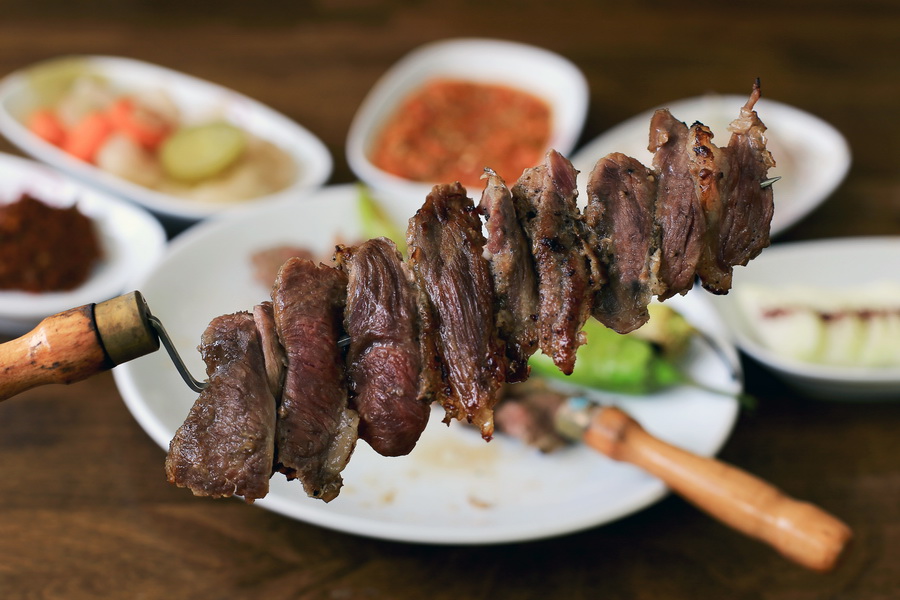
Eastern Anatolia regional cuisine is cooked through fire, stone and memory, with each province catering to unique and specific savoury delights. In Erzurum, Cağ kebabı is a signature dish, made with lamb grilled on a horizontal spit over a wood fire and sliced straight from the skewer. The city is also known for Kadayıf dolması, a dessert made of shredded pastry filled with nuts, rolled, fried and soaked in syrup. In Bitlis, Büryan kebabı involves slow-cooking goat or lamb in an underground pit, a method that produces extremely tender meat. Siirt has its own version of this dish, also based on pit-cooked meat.
Elazığ’s traditional Harput köftesi is made by hand from bulgur and ground meat, designed into small balls and simmered in tomato-based broth.
The region also grows Öküzgözü grapes, which are used in robust red wines tied to the area’s long-standing wine production. Malatya is known for Yuvarlama çorbası, a dish with small meatballs, chickpeas, and yoghurt, often prepared communally during the holidays. The city’s dried apricots, known as Malatya Kayısısı, are globally recognised.
Ağrı’s regional breakfasts often include Murtuğa, a mix of butter, flour and eggs, stirred into a thick, rich dish. In Muş and Tunceli, the focus remains on simple, locally sourced ingredients like dairy, bulgur and wild herbs.
Ardahan and Iğdır contribute with salted meats, pilafs rich in butter and yoghurt-based soups. Kars is noted for its aged kaşar cheese and goose confit, both preserved and prepared using traditional methods to endure the region’s cold winters. In Van, breakfasts are large and diverse, typically made up of around a dozen dishes that showcase local cheeses, herbs and preserves.
Enjoy the Colourful Local Festivals of the Eastern Anatolia Region
This region at the intersection hosts a range of festivals that manifest the seasons, local traditions and cultural heritage of the region. In Erzurum, winter is marked by the Frozen Festival, which includes skiing events, electronic music performances and ice sculpting workshops. The city also hosts the International Snow Film Festival at Atatürk University, bringing together filmmakers. Another event, the Culture Road Festival, features art installations inspired by regional myths and figures such as Şahmeran and mountain animals, sculpted in ice.
In Van, spring begins with the Almond Blossom Festival on Akdamar Island, where visitors arrive by boat and enjoy folk dances under the blooming trees. Later in the summer, the Van Lake Swimming Festival draws participants to Nemrut Crater Lake for swimming, diving and enjoying the volcanic surroundings. Bitlis, which also borders Lake Van, participates in this summer celebration.
Hakkari organises the Cilo Festival in the Sat Mountains, featuring high-altitude events like flyboarding, folk music and traditional dances. The festival celebrates a renewed cultural energy in the area. In Kars, the Boğatepe Cheese Festival focuses on local cheese varieties such as kaşar and gravyer, with producers and researchers meeting in village barns and tents to discuss techniques and history.
Malatya holds two major annual events: the Malatya International Film Festival (MIFF) and the Apricot Festival, which showcase both cinema and the region's globally known dried fruit. Bayburt hosts the Dede Korkut Festival, dedicated to the legendary Turkic storyteller, emphasising the region’s literary and oral history traditions.
How to Reach the Majestic Eastern Anatolia Region of Turkey
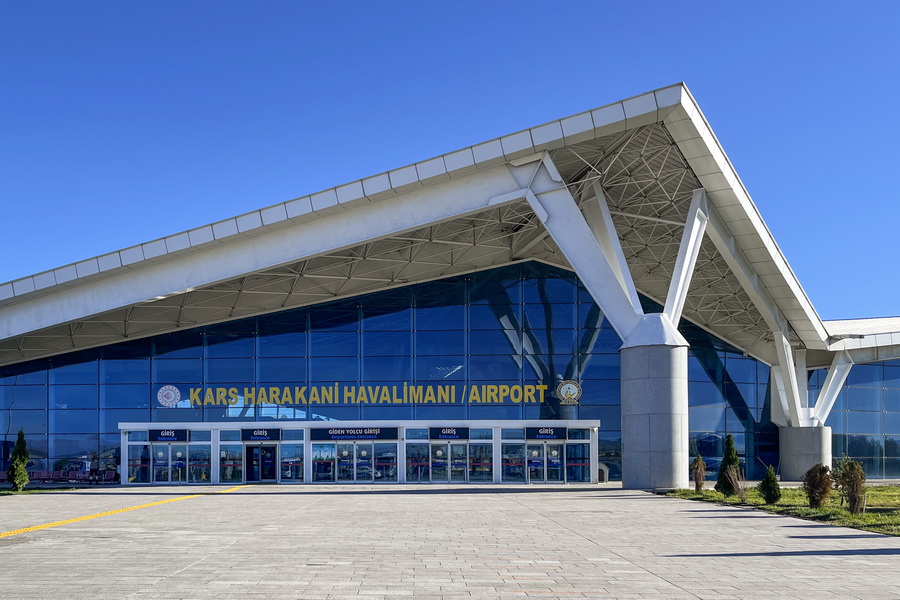
You can get to the Eastern Anatolia Region by air, train, bus, or car, with each way offering a different rhythm, a different entry into the vastness of the region. Flights connect its highland cities to the west in just a few hours. Trains crawl through valleys and plateaus, turning distance into an experience. Buses run across provinces, bridging towns with the steady beat of the highway. And for those who drive, the land reveals itself slowly, village by village, mountain by mountain.
By Air
Main Airports: Kars Harakani Airport, Erzurum Airport, Van Ferit Melen Airport
Flying is the most convenient way to reach the Eastern Anatolia Region. Kars Harakani Airport (KSY), Erzurum Airport (ERZ), Van Ferit Melen Airport (VAN), Malatya Erhaç (MLX), Elazığ (ELA), Ağrı (AJI), and Bingöl (BGN) airports all welcome daily flights from Istanbul, Ankara and İzmir. Turkish Airlines, Pegasus Airlines and AnadoluJet serve these routes regularly.
Kars, Erzurum, and Van are the main centres and perfect gateways to explore Ani ruins, ski slopes, or serene Lake Van.
From airports, taxis, car rentals, and local shuttles (havaş or özel servis) are readily available to take you to city centres or rural destinations.
By Train
If you're after a slow, scenic adventure, the Doğu Ekspresi (Eastern Express) from Ankara to Kars is an experience in itself. Winding through valleys, steppe landscapes, and snow-kissed villages, the journey takes about 24–30 hours and has become a cult classic among photographers, writers, and lovers of nostalgia.
You can book sleeper cabins or opt for the Touristic Eastern Express, which makes curated stops in Erzincan, Erzurum, and more.
Newer rail options like the Van Lake Express connect Tatvan to Ankara via Malatya and Elazığ – great for inland explorers.
By Bus
Long-distance coaches operate daily from Istanbul, Ankara, and major Turkish cities to destinations like Erzurum, Van, Kars, Malatya, and Diyarbakır. Buses are modern, with reclining seats and in-ride refreshments.
Travel times range from 14 to 20 hours depending on distance, and tickets cost between $25 and $60 (€22 and €52 / £19 and £45). Booking can be done via apps like Obilet or Busbud.
By Car
For the bold and curious, road-tripping across Eastern Anatolia is an unforgettable way to travel. Wide open highways, remote plateaus, and little-known villages form a cinematic backdrop to your journey.
From Ankara to Erzurum takes around 11 hours, while Van is a 15-hour drive. Snowy conditions in winter require caution, especially around high passes like Tendürek (Tendürek Dağı) and the Kop Mountains (Kop Dağı). Rent a car at Erzurum, Van, or Elazığ airports – or join organised tours with experienced local guides.
Local Transport
In cities like Van, Erzurum, Malatya, and Kars, minibuses (dolmuş), local buses, and affordable taxis are the primary means of urban travel. Most towns have central otogar (bus terminals) that link surrounding districts and provinces. In Van, ferries also cross Lake Van between Tatvan and Van Pier – a breezy and scenic way to travel.
Key Routes & Tips
- Ankara to Kars: 1.5-hour flight or 24-hour train via Eastern Express
- Istanbul to Van: 2-hour flight or 18–20 hours bus ride
- Erzurum to Kars: 2.5 hours by car or 4 hours by regional train
- Tatvan to Van: 4 hours by car or 5 hours including ferry
- Van to Doğubayazıt (Ishak Pasha Palace): 2.5 hours by road


